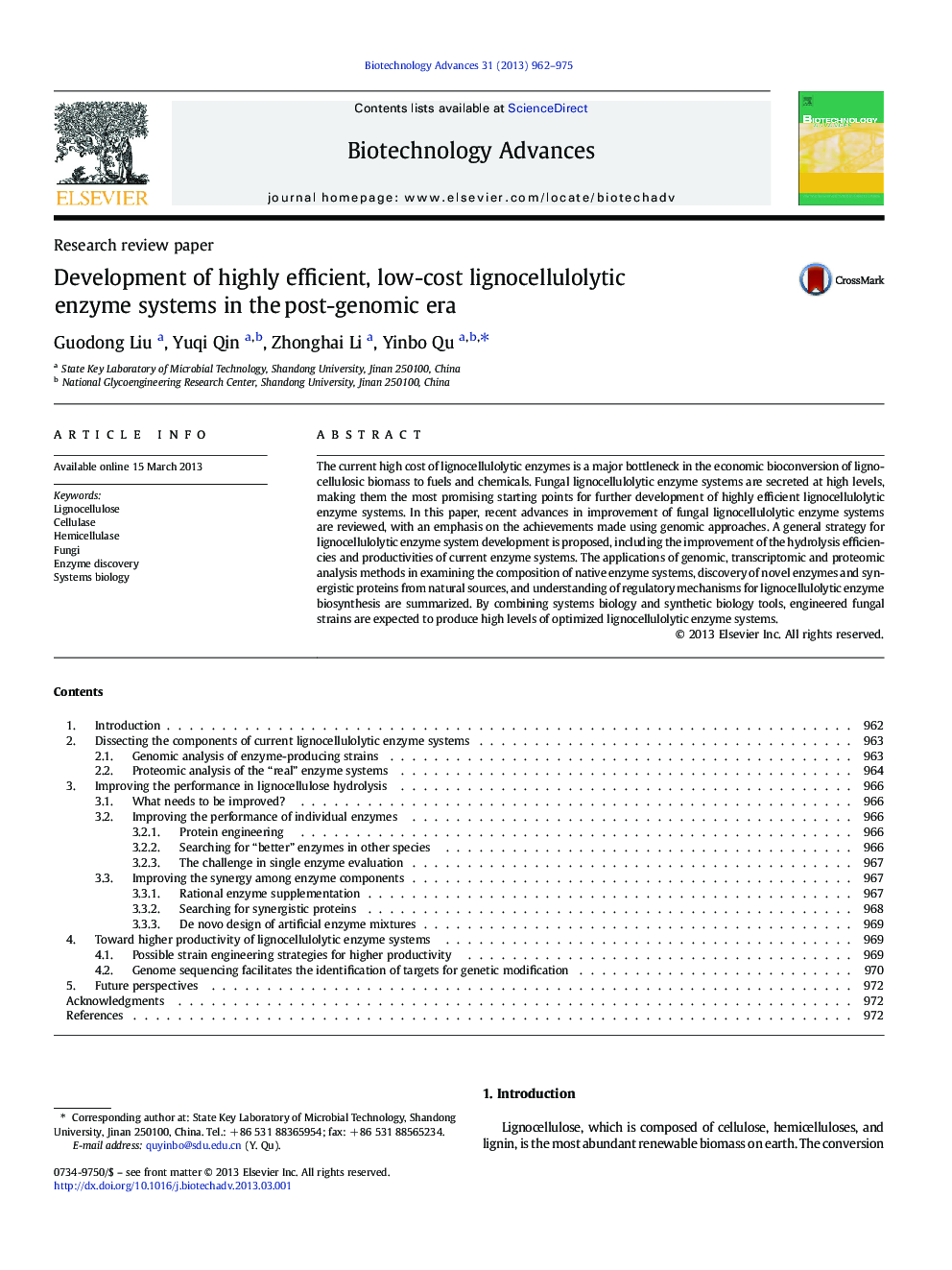| Article ID | Journal | Published Year | Pages | File Type |
|---|---|---|---|---|
| 14356 | Biotechnology Advances | 2013 | 14 Pages |
The current high cost of lignocellulolytic enzymes is a major bottleneck in the economic bioconversion of lignocellulosic biomass to fuels and chemicals. Fungal lignocellulolytic enzyme systems are secreted at high levels, making them the most promising starting points for further development of highly efficient lignocellulolytic enzyme systems. In this paper, recent advances in improvement of fungal lignocellulolytic enzyme systems are reviewed, with an emphasis on the achievements made using genomic approaches. A general strategy for lignocellulolytic enzyme system development is proposed, including the improvement of the hydrolysis efficiencies and productivities of current enzyme systems. The applications of genomic, transcriptomic and proteomic analysis methods in examining the composition of native enzyme systems, discovery of novel enzymes and synergistic proteins from natural sources, and understanding of regulatory mechanisms for lignocellulolytic enzyme biosynthesis are summarized. By combining systems biology and synthetic biology tools, engineered fungal strains are expected to produce high levels of optimized lignocellulolytic enzyme systems.
